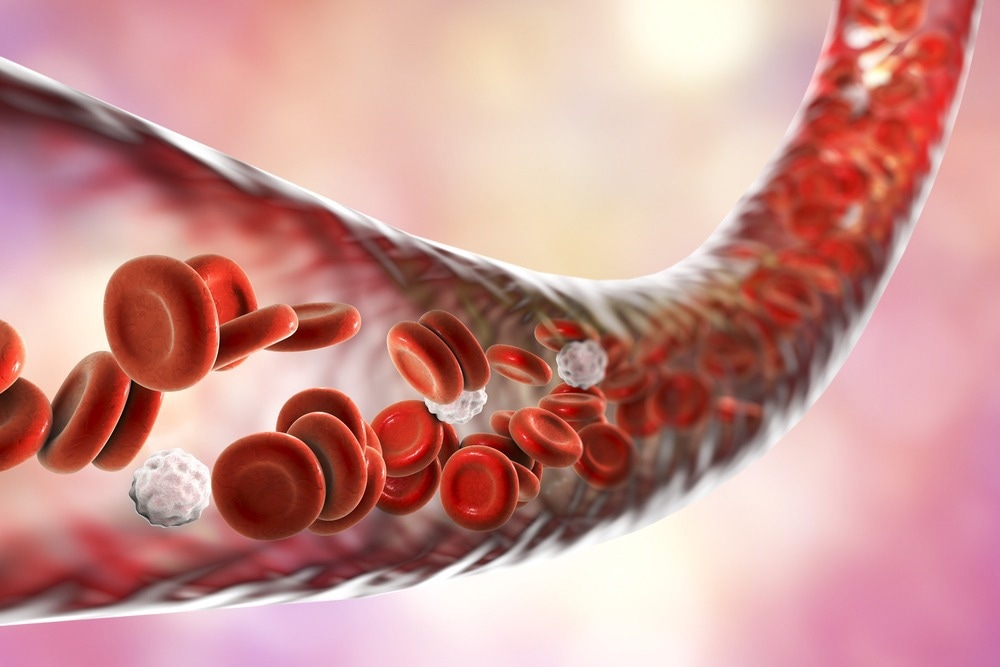Hydrosulfuric acid (H2S) is an aqueous solution of hydrogen sulfide. Approximately 80% of the total amount of H2S at physiological pH is present as monoanionic HS-. It is essential to develop an effective method to detect HS- with high selectivity and sensitivity as it is extremely harmful to people.

Study: Nitrogen-doped carbon dots with high selectivity for hydrosulfide sensing and their living cells imaging. Image Credit: Kateryna Kon/Shutterstock.com
A pre-proof study of Analytica Chimica Acta demonstrates the synthesis of nitrogen-doped carbon dots exhibiting green fluorescence using a one-step hydrothermal process. The as-prepared nitrogen-doped carbon dots have the potential to be used as reliable signals for tracking HS-. There is a linear relationship between HS concentration and nitrogen-doped carbon dots fluorescence intensity. Nitrogen-doped carbon dots can also be used as a probe for fluorescence imaging in living cells to find traces of exogenous HS.
Harmful Effects of Hydrosulfuric Acid (HS)
A strong aqueous solution of hydrogen sulfide is hydrosulfuric acid (H2S). Under physiological conditions, monoanionic hydrosulfide (HS-) makes up around 80% of all H2S. HS is regarded as a hazardous contaminant and has a variety of negative health impacts. This is because they readily diffuse from the solution into the bloodstream and tissues, resulting in physiological and biochemical issues such as personal pain, suffocation, and unconsciousness. At high concentrations, HS- causes irreversible brain damage. At low concentrations, HS- causes chronic diseases of the blood, immune, and digestive systems. Finding a technique to monitor and precisely measure HS in biological systems is crucial.
Fluorescent Carbon Dots for Sensing and Imaging HS
High efficiency, high selectivity, and biological applicability of fluorescence sensing and imaging have drawn a lot of interest among the numerous existing sensing techniques for HS. These techniques include colorimetry, electrochemical analysis, and metal-induced precipitation.
Usage of fluorescent carbon dots (CDs), a new class of carbon nanomaterial, has become a common sensing technique due to their straightforward production process, low cost, accessibility of raw materials, high fluorescence qualities, and strong biocompatibility and water solubility.
The detection limit of fluorescent carbon dots (CDs) is as low as 56 nM at the HS concentration of 0.5–20 M, and it can be successfully used to detect H2S in cell membranes. However, its low fluorescence quantum yield (FLQY) makes it difficult to stimulate the sample during cell imaging and seriously harms the cells. The FLQY of fluorescent carbon dots is only 5%. It is easier to detect intracellular H2S when CDs with high FLQY are used.
Development of Nitrogen-doped Carbon Dots for Sensing and Imaging HS
To detect HS- more effectively, Liu et al. proposed green fluorescent nitrogen-doped carbon dots stimulated by a wavelength of 513 nm.
The nitrogen-doped carbon dots exhibit outstanding sensitivity, selectivity, optical, and dispersion qualities, with high FLQY and a low LOD. They are made of tartaric acid and 3-diethylaminophenol precursors. The nitrogen-doped carbon dots can image live cells and find exogenous hydrogen sulfide in cells more significantly.
Preparation of Nitrogen-Doped Carbon Dots
Liu et al. used a stainless steel autoclave lined with polytetrafluoroethylene to synthesize nitrogen-doped carbon dots. The stainless steel autoclave was filled with 30 mL of ultrapure water, 1 g of tartaric acid, 0.8 g of 3-diethylaminophenol, and was heated at 160 °C for 12 hours under static circumstances.
The nitrogen-doped carbon dots solution was created by filtering a red solution with deionized water in a 500-Da dialysis bag to eliminate contaminants after it was cooled to 25 °C. To create a nitrogen-doped carbon dots solution containing 0.01 mg/Ml, nitrogen-doped carbon dots were dispersed in ultrapure water.
Research Findings
In this study, the researchers have produced green fluorescent nitrogen-doped carbon dots using low-cost, widely accessible materials using a one-step hydrothermal technique and nitrogen doping effect.
The experimental findings demonstrate that the novel nitrogen-doped carbon dots can be employed as a probe for HS detection owing to their better quantum yield (31.1%), stability, high selectivity, and sensitivity. The nitrogen-doped carbon dots probe's detection range for HS is estimated to be 2-55 M. It is also determined by the researchers that the detection threshold can be as low as 50.11 nM.
The potential of nitrogen-doped carbon dots for HS detection in live biological systems was also investigated by Liu et al. To examine the toxicity of the nitrogen-doped carbon dots, they employed CCK-8 analysis. KYSE-150 living cells were chosen, along with various nitrogen-doped carbon dots concentrations, and incubated for 24 hours. Their results demonstrated that the cell survival rate is assessed to be 90% up to the nitrogen-doped carbon dots concentration of 100 g/mL, demonstrating that the nitrogen-doped carbon dots have no impact on the viability of KYSE-150 cells and are appropriate for use as a live cell imaging probe.
Reference
Liu, A., Cai, H., Zeng, Y., Chen, Y., Yu, X., Song, J., Zeng, P., Qu, J., Guo, J., & Li, H. (2022). Nitrogen-doped carbon dots with high selectivity for hydrosulfide sensing and their living cells imaging. Analytica Chimica Acta, 340202. https://www.sciencedirect.com/science/article/pii/S0003267022007735
Disclaimer: The views expressed here are those of the author expressed in their private capacity and do not necessarily represent the views of AZoM.com Limited T/A AZoNetwork the owner and operator of this website. This disclaimer forms part of the Terms and conditions of use of this website.